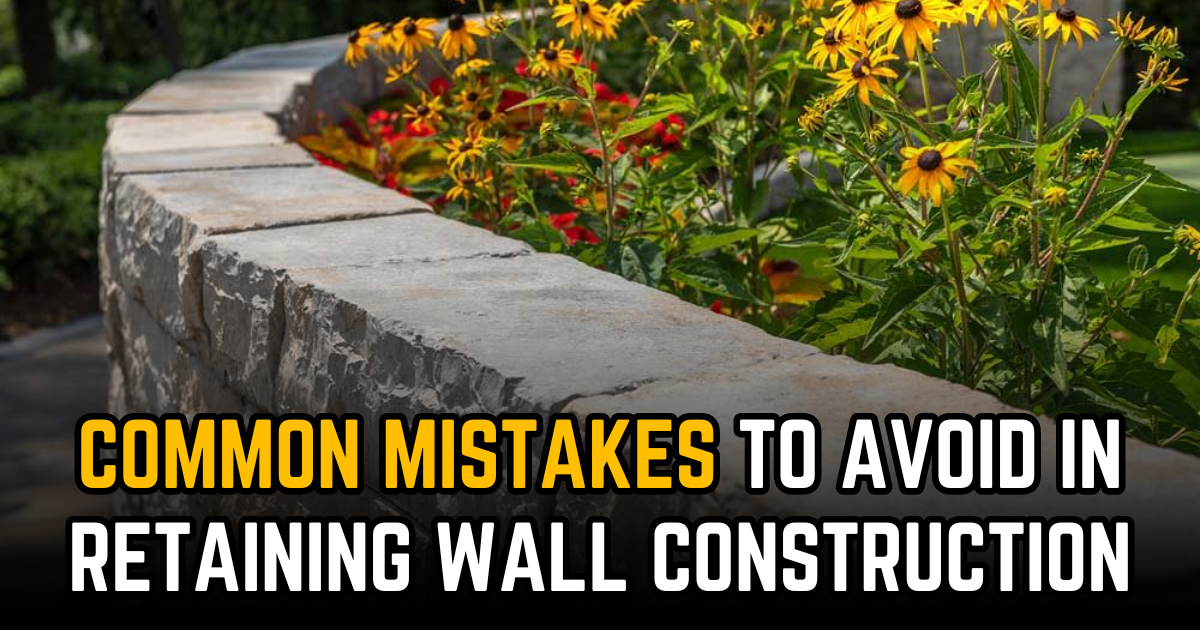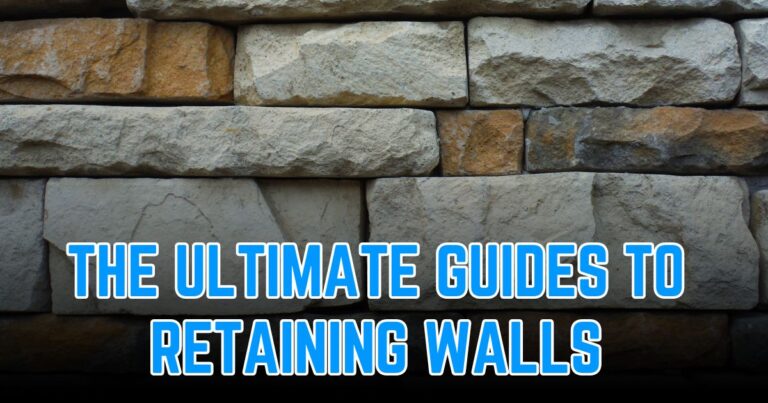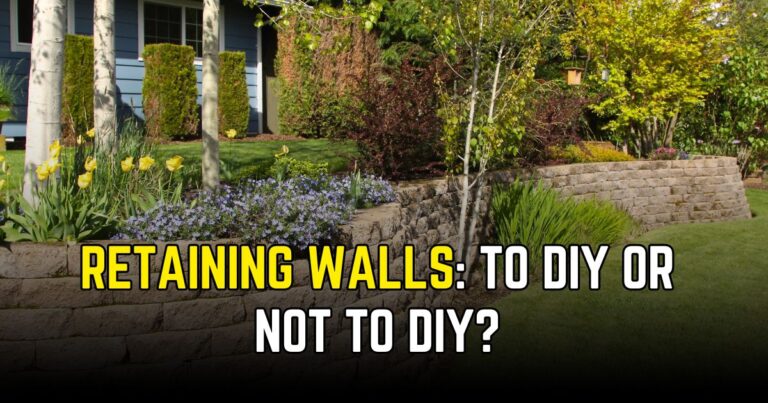Common Mistakes to Avoid in Retaining Wall Construction

Retaining walls serve a vital role in landscaping, providing structural support and preventing soil erosion. However, ensuring their effectiveness requires meticulous planning and construction. In this guide, we’ll delve into the common mistakes to avoid in retaining wall construction, ensuring longevity and stability for your landscaping endeavors.
Introduction
Retaining walls are essential features in landscaping, designed to hold back soil and create level surfaces in sloped areas. Whether for aesthetic purposes or functional reasons, these structures demand careful consideration during the construction process.
Choosing the Right Materials
The success of any retaining wall project hinges on selecting appropriate materials. Common choices include concrete blocks, bricks, and natural stones. The decision should align with the wall’s purpose, the site’s aesthetics, and budget constraints.
Site Assessment and Preparation
Before breaking ground, a comprehensive site assessment is crucial. Identifying potential challenges, such as underground utilities or unstable soil, ensures a smoother construction process. Adequate preparation minimizes surprises and facilitates efficient project management.
Proper Drainage System
Water is a powerful force that can compromise the integrity of retaining walls. Integrating a proper drainage system, including French drains or gravel backfill, prevents water buildup behind the wall, reducing hydrostatic pressure.
Understanding Soil Conditions
The type of soil on your site significantly influences the stability of your retaining wall. Understanding soil conditions allows for appropriate reinforcement choices, such as geogrids or soil nailing, addressing potential issues before construction begins.
Proper Foundation Construction
A solid foundation is paramount for the stability of retaining walls. Different sites may require different foundation types, such as shallow foundations for stable soil or deep foundations for challenging terrain.
Adequate Wall Height and Thickness
Balancing the height and thickness of a retaining wall is crucial. Incorrect estimations can lead to structural instability. A qualified engineer should determine the appropriate dimensions based on the specific requirements of your project.
Installation of Weep Holes
Weep holes play a vital role in releasing water pressure behind the wall. Correct placement and adequate spacing are essential to prevent water accumulation, which could otherwise compromise the wall’s structural integrity.
Compaction of Backfill
Proper compaction of backfill material is often overlooked but is essential for the overall stability of the retaining wall. Inadequate compaction can lead to settlement issues and reduced load-bearing capacity.
Use of Geogrids and Reinforcements
Integrating geogrids and reinforcements enhances the strength of retaining walls, especially in areas with poor soil conditions. Incorrect installation can diminish their effectiveness, so careful implementation is necessary.
Avoiding Overloading
Retaining walls have weight limitations. Exceeding these limits can lead to failure. It’s crucial to consider the weight of the soil, additional landscaping elements, and any potential surcharge to prevent overloading.
Regular Maintenance Practices
Neglecting routine inspections and maintenance can lead to gradual deterioration of the retaining wall. Regular checks for signs of wear, drainage issues, or vegetation growth are essential for long-term stability.
Addressing Drainage Issues Promptly
Drainage problems can arise over time, affecting the performance of retaining walls. Identifying and addressing drainage issues promptly can prevent water-related damage, preserving the integrity of the structure.
Consulting with Professionals
Seeking professional advice during the planning phase is a wise investment. Consulting with engineers and experienced contractors ensures that your retaining wall meets safety standards and remains resilient over time.
Conclusion
In conclusion, the successful construction of retaining walls involves a careful avoidance of common mistakes. From material selection to ongoing maintenance, each step plays a crucial role in ensuring the longevity and stability of these essential landscaping features. By adhering to best practices and learning from the pitfalls outlined here, you can create retaining walls that withstand the test of time.
Also read Retaining Walls Ultimate Guide
FAQs
- How do I choose the right materials for my retaining wall?
- Consider the wall’s purpose, aesthetics, and budget constraints.
- What signs indicate drainage issues behind a retaining wall?
- Look for water staining, bulging, or signs of soil erosion.
- Can I build a retaining wall without professional help?
- While possible, consulting with professionals ensures safety and compliance.
- How often should I inspect my retaining wall for maintenance?
- Regular checks, at least twice a year, are recommended for early issue detection.
- What are the consequences of overloading a retaining wall?
- Overloading can lead to structural failure, compromising the wall’s stability.





